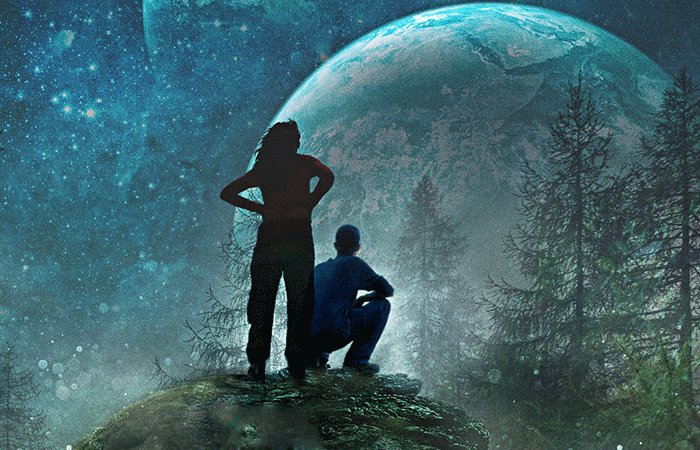MessageToEagle.com – A while back scientists announced that they had discovered what could possibly be considered as the first evidence of parallel universes.
Many people are intrigued by speculative ideas about cosmology and find the idea of parallel universes, in particular very fascinating.
While most scientists debate the possibility of extraterrestrial life in our Universe, Alejandro Jenkins, a physicist at the Florida State University has gone one step further.
Jenkins ponders not whether life exists elsewhere in the Universe, but whether it exists in other universes outside of our own.
In “Looking for Life in the Multiverse,” Jenkins and co-writer Gilad Perez, a theorist at the Weizmann Institute of Science in Israel, discuss a provocative hypothesis known as the anthropic principle, which states that the existence of intelligent life (capable of studying physical processes) imposes constraints on the possible form of the laws of physics.
According to this “anthropic” reasoning, we might just occupy the rare universe where the right conditions happen to have come together to make life possible.
“Our lives here on Earth – in fact, everything we see and know about the universe around us – depend on a precise set of conditions that makes us possible,” Jenkins said.
“For example, if the fundamental forces that shape matter in our universe were altered even slightly, it’s conceivable that atoms never would have formed, or that the element carbon, which is considered a basic building block of life as we know it, wouldn’t exist.
So how is it that such a perfect balance exists? Some would attribute it to God, but of course, that is outside the realm of physics.”
The theory of “cosmic inflation,” which was developed in the 1980s in order to solve certain puzzles about the structure of our universe, predicts that ours is just one of countless universes to emerge from the same primordial vacuum.
We have no way of seeing those other universes, although many of the other predictions of cosmic inflation have recently been corroborated by astrophysical measurements.
Given some of science’s current ideas about high-energy physics, it is plausible that those other universes might each have different physical interactions.
So perhaps it’s no mystery that we would happen to occupy the rare universe in which conditions are just right to make life possible.
This is analogous to how, out of the many planets in our universe, we occupy the rare one where conditions are right for organic evolution.
It is quite possible that a wide range of other “weakless” universes exist that are habitable but look nothing like our own.
In the weakless universe, the usual fusing of protons to form helium would be impossible, because it requires that two of the protons convert into neutrons. But other pathways could exist for the creation of the elements.
For example, our universe contains overwhelmingly more matter than antimatter, but a small adjustment to the parameter that controls this asymmetry is enough to ensure that the big bang nucleosynthesis would leave behind a substantial amount of deuterium nuclei. Deuterium, also known as hydrogen 2, is the isotope of hydrogen whose nucleus contains a neutron in addition to the usual proton. Stars could then shine by fusing a proton and a deuterium nucleus to make a helium 3 (two protons and one neutron) nucleus.
Such weakless stars would be colder and smaller than the stars in our own universe. According to computer simulations by astrophysicist Adam Burrows of Princeton University, they could burn for about seven billion years- about the current age of our sun-and radiate energy at a rate that would be a few percent of that of the sun.
“What theorists like Dr. Perez and I do is tweak the calculations of the fundamental forces in order to predict the resulting effects on possible, alternative universes,” Jenkins said.
“Some of these results are easy to predict; for example, if there was no electromagnetic force, there would be no atoms and no chemical bonds. And without gravity, matter wouldn’t coalesce into planets, stars and galaxies.
“What is surprising about our results is that we found conditions that, while very different from those of our own universe, nevertheless might allow – again, at least hypothetically – for the existence of life. (What that life would look like is another story entirely.)
This actually brings into question the usefulness of the anthropic principle when applied to particle physics, and might force us to think more carefully about what the multiverse would actually contain.”
© MessageToEagle.com








